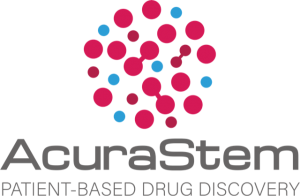 The CMT Research Foundation is pleased to announce that the research team at AcuraStem has completed their CMT Research Foundation-funded drug screening project and has found eleven potential therapeutics for CMT2A.
The CMT Research Foundation is pleased to announce that the research team at AcuraStem has completed their CMT Research Foundation-funded drug screening project and has found eleven potential therapeutics for CMT2A.
AcuraStem developed a platform to screen compounds for their ability to rescue motoneurons derived from patient cells. This approach may speed drug discovery by starting with cells from real patients rather than artificial cell lines.
Next, the AcuraStem researchers used this platform to screen several thousand compounds, many of which are already approved by the FDA or international regulatory bodies for use in other diseases. In this stage of the project, the team identified thirty-seven potential hits. The inclusion of already approved compounds may speed the further development of these potential CMT drugs since they have already been tested for safety in human clinical trials.
Finally, in the last stage of this CMT Research Foundation-funded project, the scientists retested the thirty-seven potential hits at several different concentration—repeating each concentration multiple times—to further ensure the reliability of the data. The result is that the AcuraStem researchers have identified eleven hits that may potentially have therapeutic benefit in people with CMT2A.
While this brings the AcuraStem project to a close, more research remains to be done. The next step will be to investigate how and why these compounds rescue CMT2A patient cells. Researchers will look for what the eleven hits have in common. Do they share the same molecular target? Do they share similar chemical structures? This kind of research is called target identification and validation and is meant to prevent following any of the hits down a “blind alley,” thus leading to the most efficient pathway to potential clinical trials—and your drug cabinet.
We congratulate the team at AcuraStem for their innovative thinking and fine work on this project. This is an important first step in identifying drugs that may help neurons survive longer in CMT2A. You can read more about this project and all the research we fund here.
